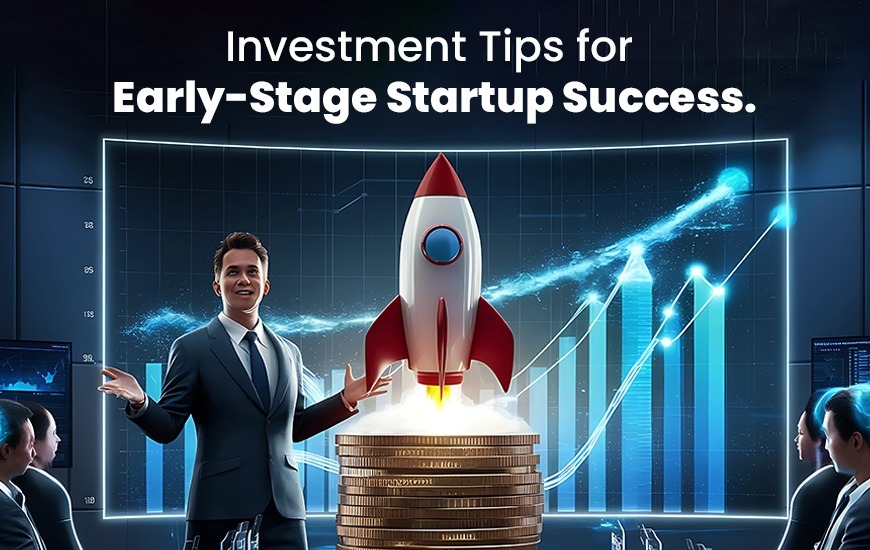
Ask any entrepreneur about the most challenging part of starting a business, and they’ll probably say it is the early-stage startup investment phase. From dealing with the uncertainty of the future to managing limited funds and delayed operations, numerous challenges arise simultaneously.
The lack of funds is often the top reason why startups fail. To avoid this, founders must understand how to attract investors and raise funds at the right time. But let’s be realistic—securing early-stage startup investment is far from a fairy tale. That is why let us guide you with valuable tips and help you navigate this journey of attracting potential investors effectively.
If you’re an early-stage business owner, here are nine things you can do to attract investors in the best possible way.
1. Highlight the problem and the solution you provide.
Every startup is solving a problem; that’s the purpose of a startup. We know it, you know it, and the investor knows it too! However, what the investors don’t know is how you are solving that problem. If you want to get your dream investment, you need to show them the problem and how your startup is solving it originally. Use an example to help.
In the early stages, you are still validating the idea by finding the right product-market fit and backing your startup with market traction. Keep up the work and collect as many growth statistics related to the niche industry to grab investors’ attention and increase your chances of securing funding.
2. Show your market research and market traction.
As we discussed above, you need to highlight a problem you are providing a solution to. But how exactly do you do that? Well, with numbers, graphs, and hopefully, customer testimonials. Investors more than often think in numbers and make their decisions based on numbers, so you need to use that to the best of your capacities.
Whether you pitch to a panel in a pitching competition or a networking event, avoid unnecessary fluffs and get to the point. Use some numbers to highlight how your idea can make an impact, and if you have an MVP (building MVP should be your priority for market traction), show them how it has benefited the target audience and their response to your startup.
3. Understand your funding needs
We all know that funding is a constant requirement for early-stage businesses. However, you need to plan them because most of the external seed funding for early-stage startups comes at the cost of equity. So, take a step back, prioritize your tasks for startup growth, and estimate the budget requirements. A few things that you might want to consider while estimating your funding needs include your operational cost, marketing cost, market research, mundane expenses, and more.
4. Estimate your burn rate for funds.
Now that we are talking about budgets and funding estimates, one thing that most startups ignore and then fail is that 38% of startups fail because of not having enough capital to carry out their daily activities. This lack of funds can happen due to many reasons. The most common one is not raising funds at the right time!
5. Build a scalable business model.
Investors are always looking for startups with great growth potential. The growth of a startup is often related to how fast it can adapt to new markets or trends, aka the scalability of the startup. Therefore, it is important to create a scalable business model to boost early-stage business growth.
But how do you build a scalable business model for startups? Focus on generating multiple income streams and optimizing the operations. Operation automation is the best way to make the business scalable.
6. Create a concise pitch and pitch deck.
A well-crafted pitch is the key to attracting investors. When you are looking for investors, often you’ll get a small window to interact with them. That’s when you need to do your magic and use an elevator pitch to introduce yourself and your startup and also give some valuable insights to investors to have further communication with them. Later, when you secure the pitching opportunity, personalize the pitch to their preferences to win some brownie points. Keep the details of the problem and solution statement, market traction, team information, and financial projections more concise and authentic.
7. Explore funding alternatives.
Most startups will assume they have limited funding alternatives, which is partly true. Yes, they have limited traction and considerably small sales to prove their profitability. However, that doesn’t mean they have to limit their fundraising alternatives. While doing investor outreach for startups, focus on exploring all available investors. A few investors providing seed funding for early-stage startups include angel investors, incubators, early-stage VC firms, corporate capital, crowdfunding, and government grants.
8. Work with accelerators.
The startup accelerator programs are yet another thing that early-stage startups shouldn’t be missing out on. The programs are limited-time cohort programs for startups focused on helping startups streamline their operations and expand their markets to boost startup growth. These accelerator programs in the UAE support the startup accustomed to the UAE environment by providing necessary guidance, access to resources and networks, and some funding and fundraising opportunities.
9. Build your network in the industry.
Networking can change the game of your early-stage business growth and raise seed funding for early-stage startups. You can leverage your network to validate the idea and find investors willing to invest in your startup. The networking can help you secure referrals to get a competitive advantage when pitching your startup to investors. So, build your network in the industry and create strategic connections. Networking events like the International Investors Summit can help you get started with networking in the UAE and find reliable experts to grow your startup.
Conclusion
Early-stage startup investment struggles the most in securing and sustaining startup funds to keep the business afloat. We discussed nine tips for founders to remember when they perform investor outreach for startups. It all starts by highlighting the problem their startup provides the solution for to catch the investor’s attention.
Then, follow it up with the market research and traction you have, along with a scalable business model for early-stage business growth. Most importantly, you should know how fast your funds are running out and what are your funding needs are. Explore the various types of investors available for early-stage startups, including the startup accelerator program, and network well to find reliable investors and referrals to get the pitching opportunities. By attending events like IIS, you can build a reliable network to help you boost your startup growth.
FAQs
1. Who are the investors in the early-stage startups?
Investors in early-stage startups typically include angel investors, individuals investing their funds, and early-stage venture capital (VC) firms, which provide capital in exchange for equity. Additionally, startup accelerator programs often fund early-stage companies while offering mentorship and resources. Some friends and family or crowdfunding platforms also serve as alternative funding sources. These investors look for innovative ideas, strong teams, and scalable business models that promise high returns.
2. How do investors evaluate early-stage startups?
The early-stage seed funding for early-stage startups is risky. Therefore, investors consider many factors before choosing which startups to invest in. The market validation and the right product-market fit are the primary factors affecting the choice of the investors. Additionally, they focus on the founder and their team’s skills to accomplish the startup goals. A highlight of the financial projections helps the investor estimate the profits they can make and thus make the final decision. If the startup has an MVP, they also consider the market traction an important merit.
3. What are the mistakes to avoid when raising seed funding for early-stage startups?
Newly emerging businesses can easily make mistakes, which can end up leading to startup failure. The first one is avoiding thorough research for the right product-market fit, leading to losses and waste of funds. Most startups fail at tracking their fund usage and thus raise funds either too early or too late. Lack of pitch and business model preparation can lead to losing the funding opportunity. Most startups fail at evaluating their startups, leading to overestimation or underestimation which impacts the fundraising process.
4. What are the benefits of joining the entrepreneurial development programs?
Startup accelerators provide funding and resources like mentorship, training, and structured business development programs. They help refine business models, improve market strategies, and connect startups with a network of investors and industry experts. Accelerators often host demo days, giving startups exposure to potential backers. Additionally, startups benefit from peer learning by collaborating with other entrepreneurs facing similar challenges, ultimately increasing the chances of long-term success.





